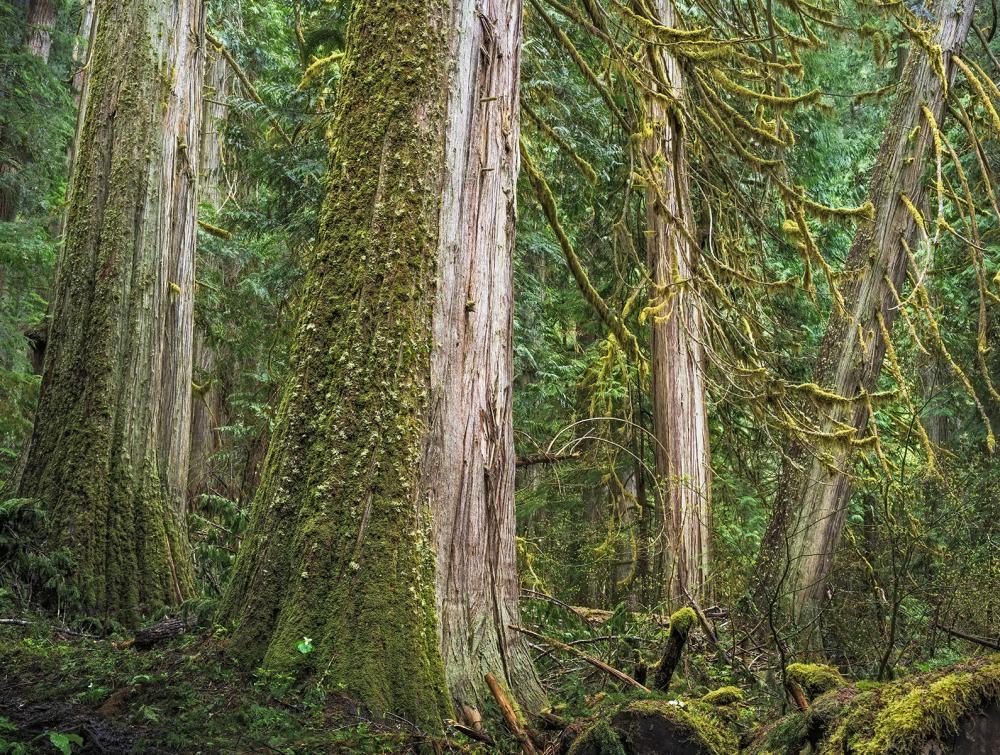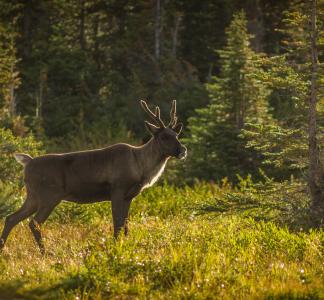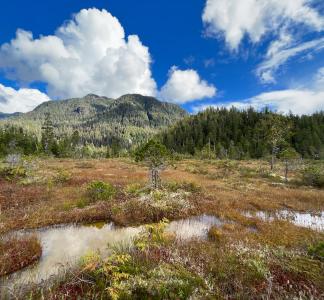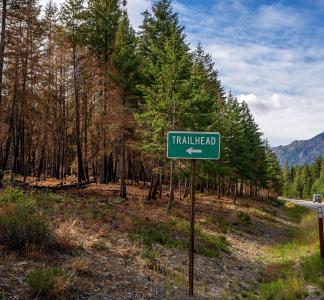What makes an “old-growth” forest? It depends on more than just age

Glacier Peak Wilderness, WA
Mason Cummings, TWS
New study defines terms; 6% of U.S. forests old-growth
As a late 20-something hurtling all too rapidly towards the age of 30, I often find myself wondering what makes a person “old.” Is it when my joints creak at the end of a long day? When I no longer understand the cultural references of people just a few years younger than me? When I start referring to those same people as “the kids these days”? I ask my therapist; she laughs but doesn’t answer. I scream at the sky in existential frustration.
A similar quandary has vexed forest ecologists for decades. Like all living things, forests have defined lifespans, and their elder years are referred to as “old-growth." These historic forests not only play a vital role in our ecosystems, but also capture and store tremendous amounts of carbon, making them an essential natural solution to the climate crisis.
In order to protect these forests, the government first needs to inventory what mature and old-growth forests remain on U.S. lands. No national inventory of these forests has ever been taken—no framework even exists to do so—largely because no one can seem to agree on how mature and old-growth forests should be categorized.
Creative solutions to determine what’s old and mature
You might be tempted to suggest age as the defining factor in what makes forests “mature or old-growth"—and indeed, sometimes it’s that simple. The Northwest Forest Plan, for example, recognizes stands of trees over 80 years old as being “mature.” But this categorization only works on a regional level; applied on a national scale, it fails to account for variable factors in the growth of trees like soil quality and disturbance history. For example, a forest with rocky or nutrient-deprived soil may look “younger” in growth than its true age would suggest.
Undeterred by warnings that the question was too complex to answer, The Wilderness Society scientists Kevin Barnett, Greg Aplet and Travis Belote combined theory and data to develop a categorization system that they believe accounts for the major variables—and created a national inventory of U.S. old-growth forests in the process.
You probably already understand that trees absorb carbon from the atmosphere, which make them critical for air quality and combatting the climate crisis. That collected carbon is stored in the tree’s limbs, roots and leaves—what scientists refer to as biomass. The Wilderness Society team realized that by analyzing a forest’s combined biomass, they could determine the total amount and accumulation rate of carbon within forests then define them based on those values.
Old-growth forests: a small but mighty population
To test their system, the team used data from the U.S. Forest Service to inventory and categorize U.S. forests. Their findings reaffirmed observations that old-growth onset varies across forests, and reinforced the need to conserve what older forest the U.S. has left.
The team determined that old-growth forests unfortunately but unsurprisingly comprise a small slice of the U.S. forest estate—a mere 6 percent of the total. Decades of logging, development and climate change-driven impacts like drought and wildfire have decimated these mighty forests. With such a small amount left, decisions like the Biden administration’s reinstatement of protections to millions of acres in the Tongass National Forest are critical to ensuring what old-growth forests remain are not sacrificed for industrialization.
Also important is conservation of the mature forests that will grow to become old-growth if left undisturbed—these make up 32 percent of total U.S. forests. We have both an opportunity and a responsibility to protect those forests now to ensure they’re still around—and still sheltering and supporting life—for future generations.
Maintain what’s present, restore what’s degraded
Ongoing efforts by the Biden administration to prioritize mature and old-growth forests are a step in the right direction. But the new findings illustrate the need for even more work to determine the current state of U.S. forests, arrive at standard definitions and produce consistent conservation policies. This is a golden opportunity to thoughtfully steward, manage and restore what remains for the good of the climate, communities and wildlife alike in decades to come.
In the meantime, I’ll use this framework to reassure myself that the “kids” calling me “old” are only partially right.
Logging-free forests are critical for threatened wildlife
Thomas Hartmann via Wikimedia Commons
Tongass roadless protections reinstated: 4 reasons that’s great news
Angela Ma, USFS, Flickr
Forest Service takes more old growth steps, announces formation of Northwest Forest Plan advisory committee
Joe Whittle



